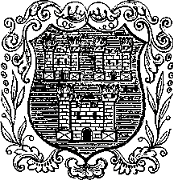Dublin City
DUBLIN, the metropolis of Ireland, and a city and county of itself, in the province of LEINSTER, situated in 53° 21' (N. Lat.) and 6° 17' (W. Lon.), 339 miles (N. W.) from London; containing, in 1831, 265,316 inhabitants, of which number, 204,155 are within the boundary of the civic jurisdiction, and the remainder in the county of Dublin.
The existence of this city, under the name of the city Eblana, was first noticed by Ptolemy, the Roman geographer, who lived about the year 140. Shortly after it is mentioned by the native historians, as being fixed on as the eastern boundary of a line of demarcation drawn westwards across the island to Galway, for the purpose of putting an end to a war between two rival monarchs, Con-Cead-Cathach, King of Ireland, and Mogha Nuagad, King of Munster; the portion of the island to the north of the boundary line being assigned to the former, the southern portion to the latter, of the contending parties. The city originally occupied the summit of the elevated ridge that now forms its central portion, extending from the Castle westwards towards Kilmainham, and was at first called by the native Irish Drom-Col-Coille, or the "Hill of Hazel wood," from the number of trees of that species which grew on it.
The correctness of this conjecture as to the origin of the name is confirmed by the fact that, on clearing away the foundations of the old chapel royal in the castle, some years since, to prepare for the erection of the beautiful structure that now supplies its place, they were ascertained to have been laid on piles of hazelwood. Another ancient name, still retained by the natives, is Bally-Ath-Cliath-Duibhlinne, the "Town of the Ford of Hurdles on the Blackwater," given to it in consequence of the people having access to the river by means of hurdles laid over its marshy borders, before it was embanked. By the Danish settlers in the district of Fingal, to the north of the city, it was called Divelin, and by the Welsh it is still called Dinas Dulin.
